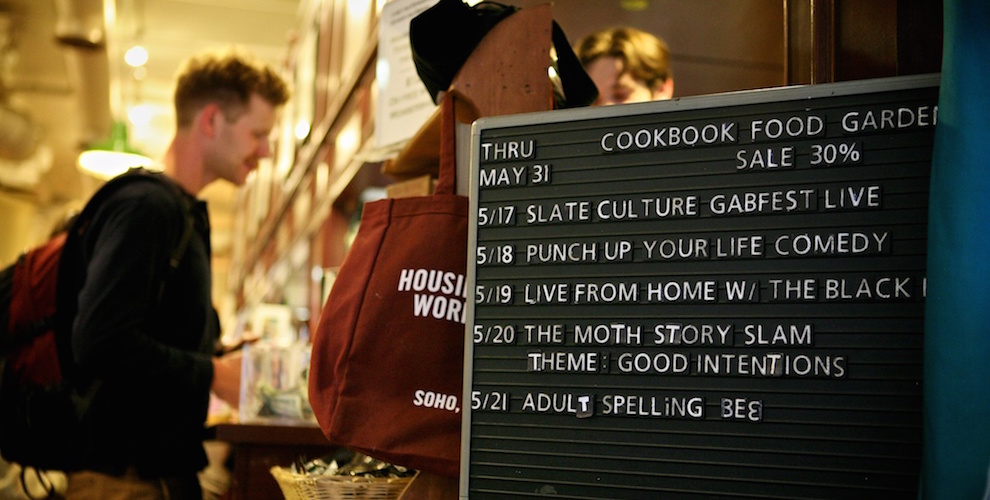
Editor’s note: Atlantic Media publishes a weekly newsletter called The Idea about “everything new and innovative in the media industry.” This week’s edition featured a Q&A with Heidi Strom Moon, a product manager at Slate, where she oversees its membership program Slate Plus, which was one of the earlier attempts to build a membership model at a digital-native site. (It’s also one of the most successful, with more than 60,000 paying members.) Here’s an expanded version of that Q&A.
When we moved from Newport News up to D.C., I wound up staying on the digital side and worked at a few different agencies and at a nonprofit. I did all the different parts of managing and building and maintaining a website before CMS came along. This position at Slate was a cool way to bring all those threads together.
I’m a product manager on what we call the PIE team, which is our cross functional team that brings together product, research, engineering, UX and design. I primarily own the roadmap for our membership program, Slate Plus, as well as newsletters and commenting. That includes drawing out requirements in collaboration with people around the organization, documentation, writing ticket, sprint planning, and quality assurance.
A big part of my job also is prioritizing requests and tickets that I’ve written against others and the overall roadmap for the PIE team as a whole. In my previous agency life, I did a lot of marketing work, so I play the role of a product marketer for Slate Plus, writing copy for house ads and email blasts. I also coordinate with an outside consultant on paid acquisition campaigns on Facebook and Google.
Probably our biggest group of members join because of our podcast benefit. Members get ad-free feeds and bonus content, including entire bonus episodes, like a special episode of Political Gabfest looking at South Carolina and Super Tuesday that we dropped over the weekend for members only. For all three seasons of Slow Burn, between six and eight primary episodes in the series were ad-supported, so anybody could listen to them; but for each one of those episodes, there was an entire bonus episode that was for members only.
Another big group is readers of our advice columns and, in particular, Dear Prudence, who join to get more bonus content like extra questions and answers. We have a column called Dear Prudence Uncensored, which is a behind-the-scenes of a letter each week, and we have the Dear Prudence podcast.
We have a third bucket of members, which to some degree crossover with both of the previous two. These are people who just want to support our journalism.
In fact, we just launched one yesterday for readers and members, and we ask: Why did you join? What was the benefit that made you sign up? If we took away a certain benefit, would you cancel? This way, we’re able to estimate the value of a benefit, which has helped us refine the offering over time.
We’ve found that the benefits that are most important for most of our members are podcast-related perks and bonus content.
The other thing that surprised us in the beginning was the extent to which people would sign up just to support our journalism. In one of our first surveys, we didn’t even ask that as a reason for why people signed up, since we were thinking so much about the specific package of benefits. A lot of people wrote in that it was just to support Slate, and in subsequent surveys, it’s always been one of the biggest reasons people have said they’ve joined. We’ve really started leaning into that messaging.
Having said that, members get early access to tickets for our live shows, and we often find Plus members meeting each other at those events.
As for commenting, a lot of places have gotten out of it, but we still see value in it. We have a few people who spend a lot of time commenting, so they’re super loyal and they spend a lot of time on the site. We have a dedicated moderating community manager resource who make sure that people are respectful. We have a team of volunteer moderators to help us with that to make sure that it remains a place where people are willing to participate and feel like there’s value in spending time.
Another one that’s similar, but across the globe, is Norway’s NRK, which did one called Chasing Climate Change. Finally, the Audubon Society did a really cool Climate Action Guide with these beautiful, animated illustrations. It tells you what you can do, so it’s helpful, not just informative.
Saanya Jain is a strategy research fellow at Atlantic Media. An abbreviated version of this Q&A was originally published in the March 9 edition of The Idea, Atlantic Media’s weekly newsletter covering the latest trends and innovations in media.